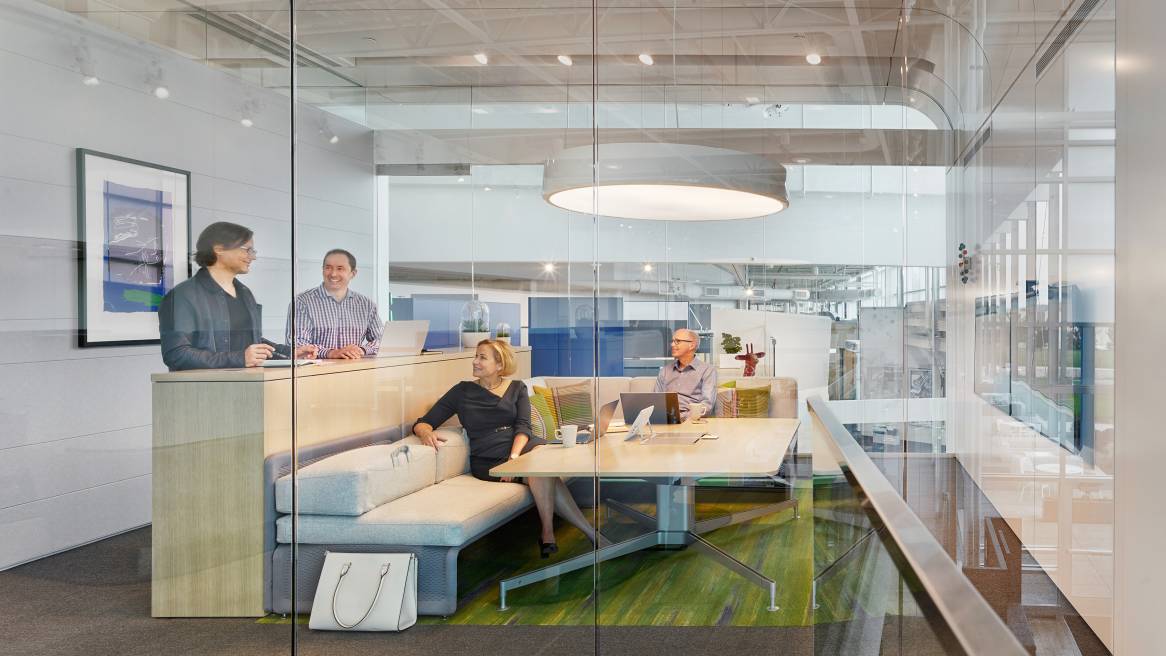The New Leader: ‘We Must Change’
Ford Motor Company is facing important decisions. Building competitive pressures, disruptive technological advances and major industry shifts require the 113-year-old company to innovate and implement the right ideas, faster. Its customers, employees and shareholders are looking to Ford’s leaders to choose the right direction to drive the company forward. It’s a monumental task and leaders at Ford recognize they can’t use yesterday’s top-down, hierarchical leadership methods.
“I truly believe in collaboration and inclusion as a way to lead a company forward,” says Jim Farley, CEO and chairman of Ford Europe.
Forces of Change
Farley describes how the automotive sector is changing rapidly. Global automakers are getting better and faster while luxury brands are crossing into the mainstream. Technology is quickly disrupting the industry. And, the automotive sector is moving from producing cars to supplying mobility. An asset like a car is unused for 90 percent of its time, while in contrast, the sharing economy and congestion of large cities has created an explosion of mobility as a service.
All of these pressure points are causing Ford to undergo a transformation. “We must change,” says Farley. “We can either keep on doing what we’ve done up until now and get the same results, or go in another direction and become a vibrant organization.”
Vibrancy. Adaptability. Agility. This ever-changing global business environment has top leaders rethinking how to lead and create more robust organizations. Ford is not alone as it seeks to thrive amidst unpredictable circumstances. Whether it’s changing workplace culture, encouraging more distributed decision making or working in more matrixed organizations, leaders are reporting working in new ways to create a more agile workforce and boost employee engagement.
New Environment
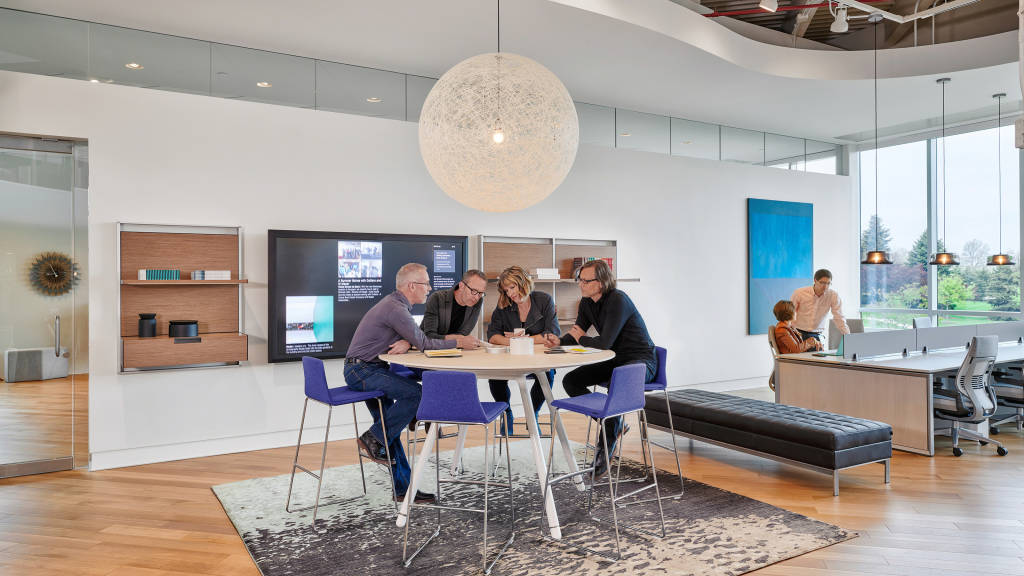
These new ways of working require an evolution of the workplace environment designed to support new leaders. And, forward-thinking organizations are recognizing how the work environment can be used as a tool to communicate cultural values to people within the organization.
At Xerox, corporate vice president Jacques Guers says the context of slow growth and strong competition has his company rediscovering the importance of the physical workspace to engage workers. “We travel less and have reduced our real-estate footprint,” says Guers, “making it important to fully-leverage our existing environment.”
Guers points to mobile technologies as another factor driving this new way of working. Smartphones, tablets and laptops allow leaders to work anywhere at anytime. There’s great benefit to this ability to work while on the move, but there are costs as well. Executives face even greater challenges in maintaining relationships and connections, especially in globally integrated organizations.
Physical space as a tool
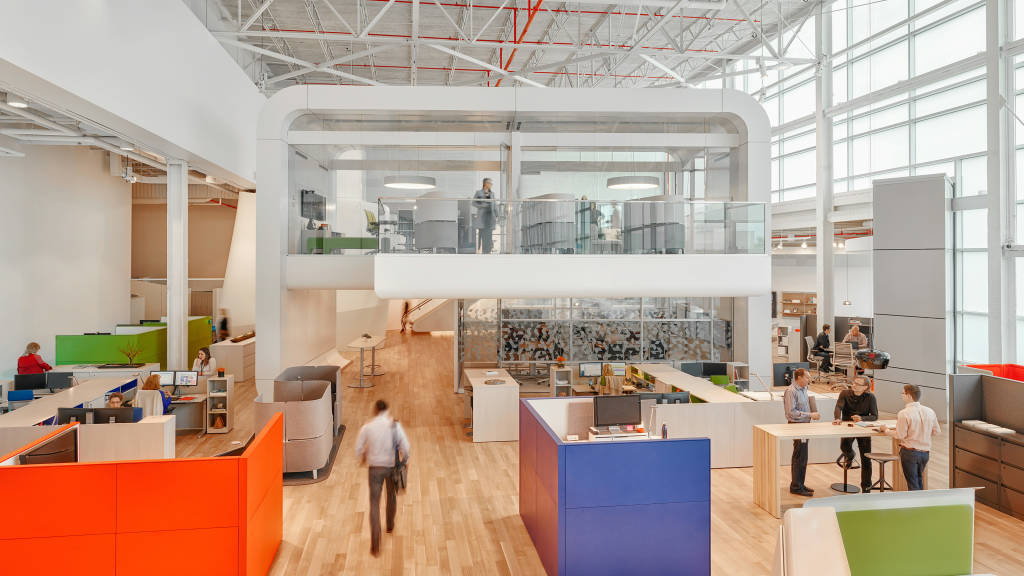
The traditional executive office can be a barrier as well. “There is the culture and personality of the leader who needs to be physically seen by his workers, especially in moments of uncertainty,” says Guers. “To stay within a closed office is representative of an old management style. It signals you are protecting yourself, which is the worst style of management.”
At Ford Europe, Farley says their leadership space could do more to support innovation and the changes they need to implement.
“I have approximately 20 people who report to me and every time I wish to talk to them I need to walk through three solid doors to reach them and then another three to return. That’s six doors each time I make contact,” says Farley.
The Adecco Group France president Christophe Catoir agrees a physical workspace can send a message to employees. He says it’s necessary to think deeply about your space. “In France, we try to be modern by embracing open spaces and by providing friendly social spaces for employees to gather, but managers still keep their enclosed offices” At The Adecco Group in France the company culture is very relationship-driven and friendly, which translates into a workspace designed to foster emotional connections and social interaction.
Leaders need to be involved in how the workplace supports their people. Xavier Susterac, BASF senior vice president, Southern Europe, says project managers or consultants may not know the company’s or country’s culture and leaders need to pay attention to both. “It is essential to consider cultural backgrounds while designing workplaces. The challenge is to harmonize the company culture with the local cultures,” Susterac says.
Key design principles
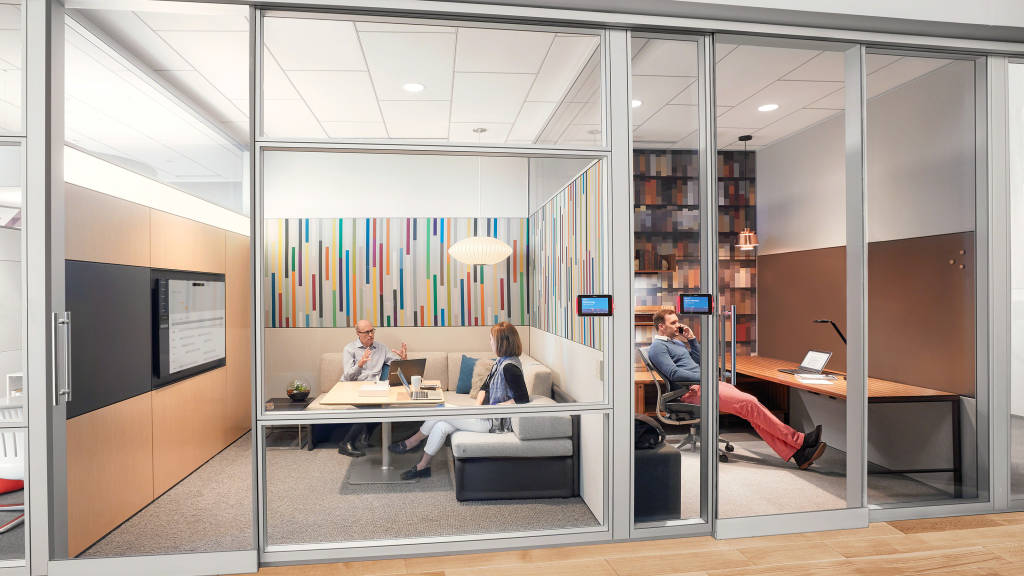
Following years of research, the design team at Steelcase identified three key principles for designing leadership spaces that can foster an adaptive culture.
Space as synapse: Because organizations are more networked and integrated and because executives maintain tightly controlled schedules to respond to demands for their time and presence, maintaining relationships is a challenge. Leadership environments can help to better connect people and information. These spaces can also provide remote executives with a virtual presence more similar to the leaders who are physically in the room.
Nurture the individual: Science confirms a link between physical and mental health and how our brain performs. Significant stress can impact how we think and solve problems if it isn’t managed properly. A workspace designed to help leaders deal with stress and promote their wellbeing can improve cognitive performance.
Enable transitions: Leaders need to constantly switch gears throughout the day and those shifts cost time — a critical resource. The workplace can help to speed up contextual immersion and support leaders getting into flow faster.
New leadership prototype
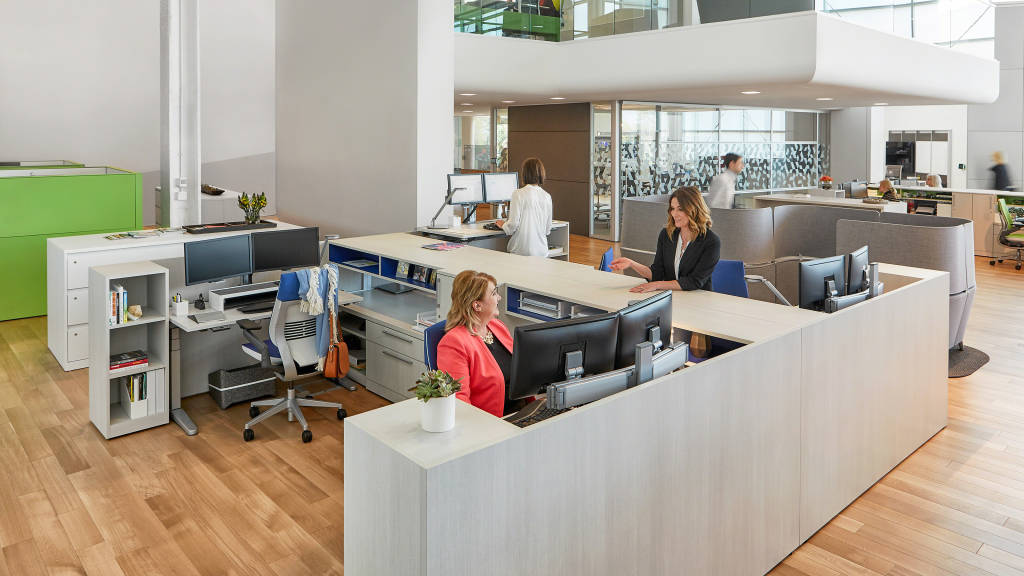
Always willing to learn by experimenting on itself first, Steelcase is in the early stages of testing a new leadership prototype. Led by research, designers created a new Leadership Community on the first floor in the heart of the company’s main campus. Unlike the previous leadership space which was on a separate floor, the new space is on the traffic path of the company, making senior leadership more accessible and more visible while still able to access private areas when needed.
Thresholds to and from the space are minimized. Leaders have placed themselves in the midst of the flow of ideas and people. The invitation to the rest of organization is clear. Anyone can work anywhere no matter what his or her title or status may be. The leadership prototype is no longer a destination. It’s a thoroughfare that is opening up and strengthening relationships.
“A leader must create a trusting and safe environment so people can express themselves, feel happy to try new things and dare to fail,” says innovation and change researcher Dr. Iñaki Lozano Ehlers*, founder and managing director of BICG.
By breaking down walls and creating an ecosystem of spaces, these connected workplaces allow leaders to build relationships with employees, and remain present in the spaces that their employees reside.
Professor Wilhelm Bauer**, Managing Director from Fraunhofer Institute IAO studies innovation and change within organizations. He says leaders are becoming curators of culture. They must clearly and consistently communicate the company’s values to all employees.
“Once the purpose of the organization has been shared, understood and embraced, a leader then can build a culture that aligns among all people, and this can be the foundation of greater business success,” says Professor Bauer.
Back at Ford, the goals for collaboration and inclusion continue. Farley says there’s no question the work environment can make a meaningful difference. “Space has a fundamental impact in setting the tone and is the living example of how we want the rest of our people to work.”
For more information on Steelcase’s new Leadership Community, read The New Leader in the latest edition of 360 Magazine.
*Dr. Iñaki Lozano Ehlers: As founder and managing director of BICG, the Business Innovation Consulting Group, Dr. Ehlers partners with clients to deliver customized solutions that resolve their most significant issues related to their people and organizations. BICG is a research and consulting firm focused on innovation and New Ways of Working strategies.
**Professor Wilhelm Bauer: As executive director at Fraunhofer IAO, Professor Dr. Bauer leads a research organization with some 600 employees. He is responsible for research and implementation projects in the areas of innovation research, technology management, living and working in the future, smarter cities and mobility innovations.

